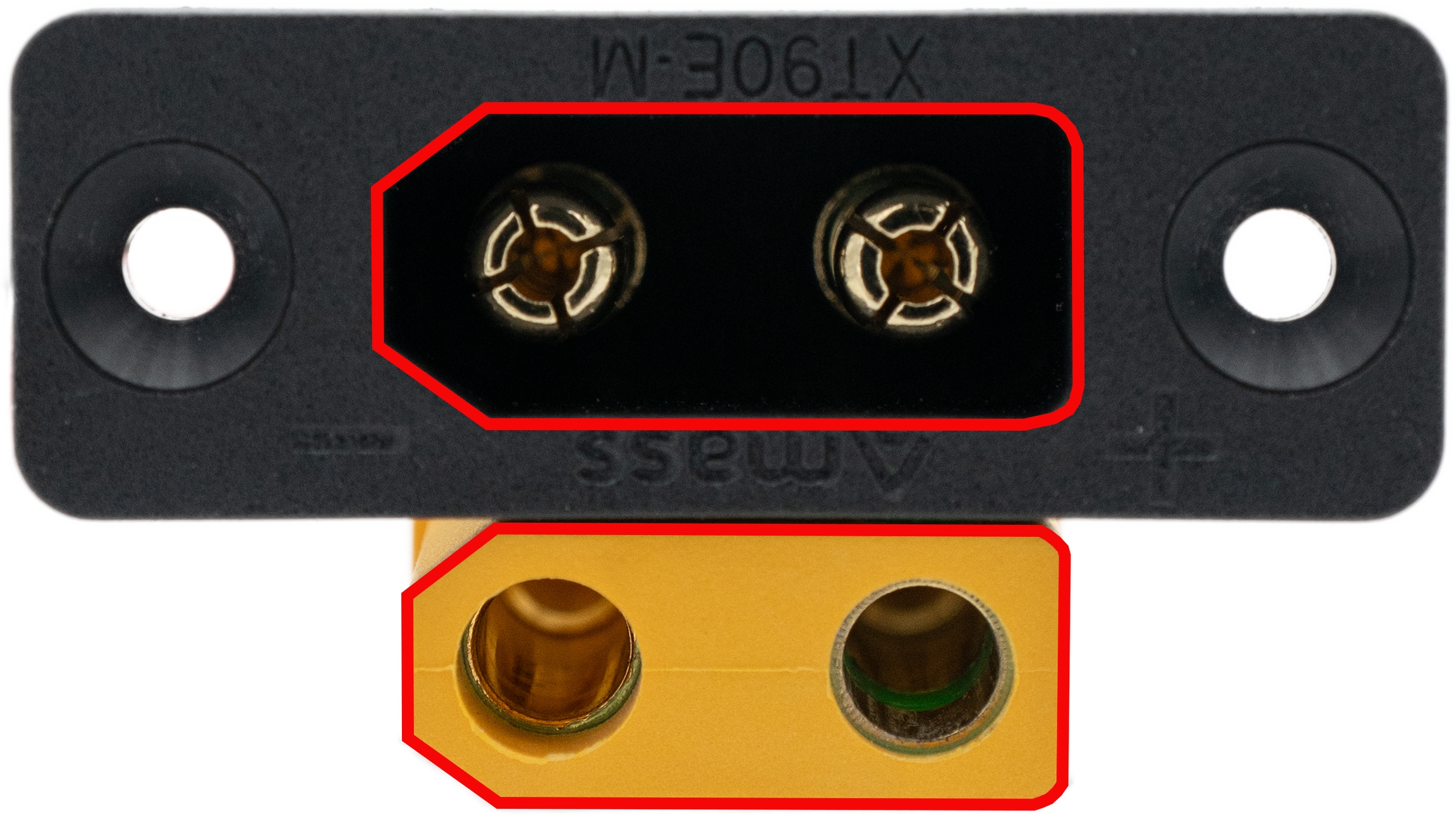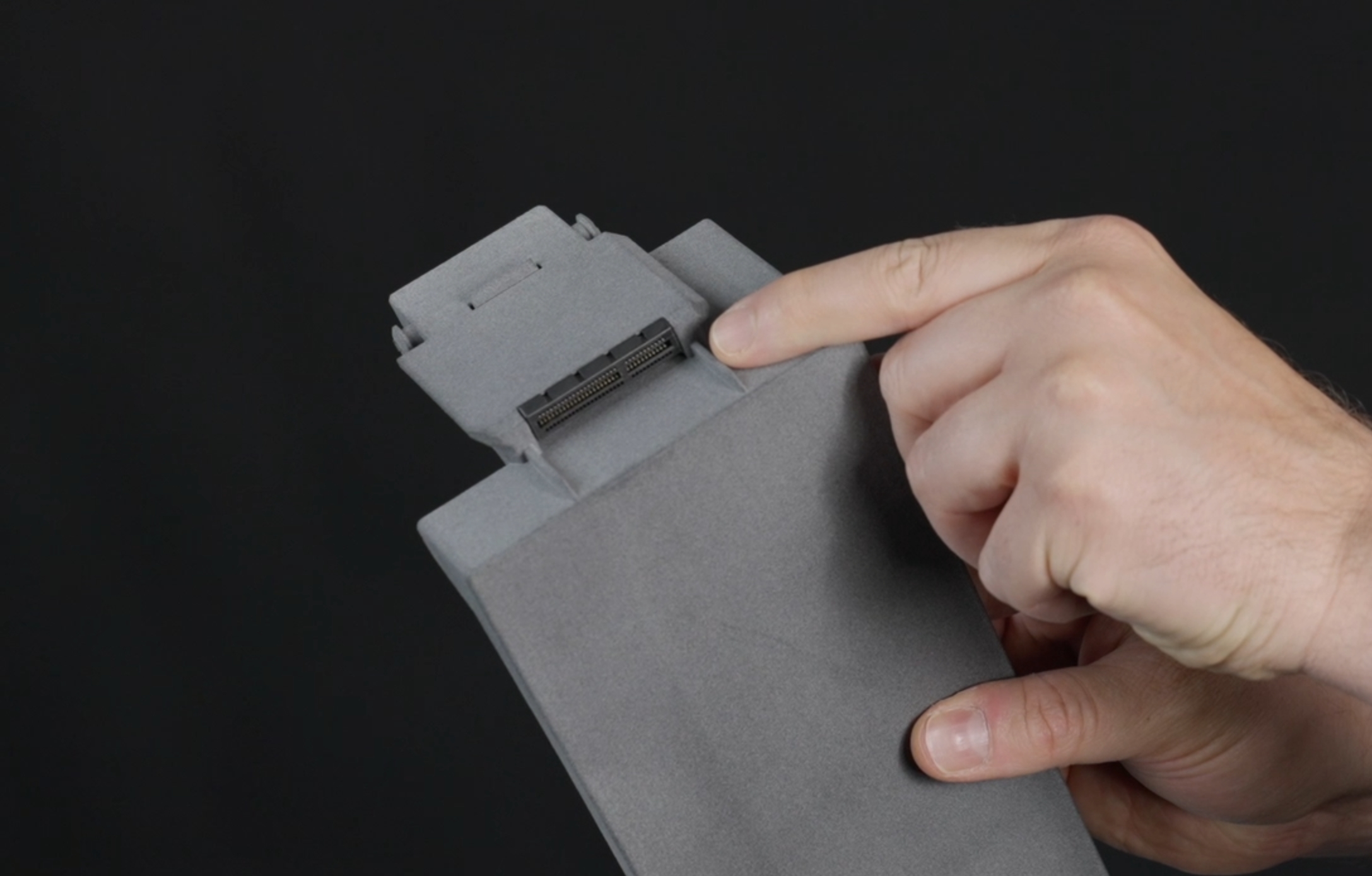Powering the vehicle
In this section we will explain how to power on the vehicle.
After placing the main battery as described in the chapter Battery placement the XT90 connector of the battery needs to be connected to the XT90 socket in the battery bay.
The XT90 socket is located on the right side of the battery bay (front view).

The XT90 connector and socket have key features that allow for easy identification and proper alignment during connection. The constricting shapes at the left end of the connector and socket need to align. This design ensures that the connectors can only be plugged in one way.

Insert the XT90 connector of the battery into the XT90 socket of the Evo until fully joined.

Vehicle initialization
When powering up the DeltaQuad Evo, it will go through an initialization routine that can be monitored on the Evo's LCD display located above the avionics bay:




After the successful initialization, the LCD will read "Ready to fly".

The following is a complete list of messages and their explanations.
Ready to fly
The vehicle has found no errors and is ready to fly.
Left wing not detected
The left wing is not detected. Please attach the left wing.
Right wing not detected
The right wing is not detected. Please attach the right wing.
Reverse payloads
The heaviest payload should be in the rear (slot 1). This message indicates that the payloads should be reversed. The payload in slot 1 should be installed in slot 2 and vice versa.
No payloads found
The software has not found any payloads. When flying without payloads the empty payload boxes (placeholders) need to be installed.
Slot 1: No payload
No payload was found in slot 1 (rear payload). Both payloads should be occupied. With a dual payload, this message should not appear.
Slot 2: No payload
No payload was found at slot 2 (front payload). Both payloads should be occupied. With a dual payload, this message should not appear.
Slot 1 not Configured
The payload printed circuit board (PCB) for the payload in slot 1 has not been programmed.
Slot 2 not Configured
The payload printed circuit board (PCB) for the payload in slot 2 has not been programmed.
Balancing Error XXmm
The payload makes the vehicle to nose or tail heavy and cannot offset the center of gravity (CG) with the nose battery (between -5 and +35 is ok).
Automatic balancing
The system is balancing the vehicle by moving the nose battery fore or aft.
Arming denied: XX
Arming UAV is denied because of reason XX.
Battery not fully charged
Battery level below 80%.
Nose battery moved XX mm
The vehicle moved the nose battery XX mm to offset the imbalance caused by the payloads.
Payload to heavy
The total payload weight is above 3000 grams. This is not within vehicle specifications.
Updating params
The vehicle parameters are being updated to accommodate the payloads.
Writing parameters failed
There was an error while writing the parameters.
Automatic vehicle balancing
Every payload box carries information about its weight and weight distribution. This information is stored on the I/O board of the payload box.

Depending on the installed payloads the DeltaQuad Evo will automatically balance itself by moving the main battery tray to the front or to the back.
